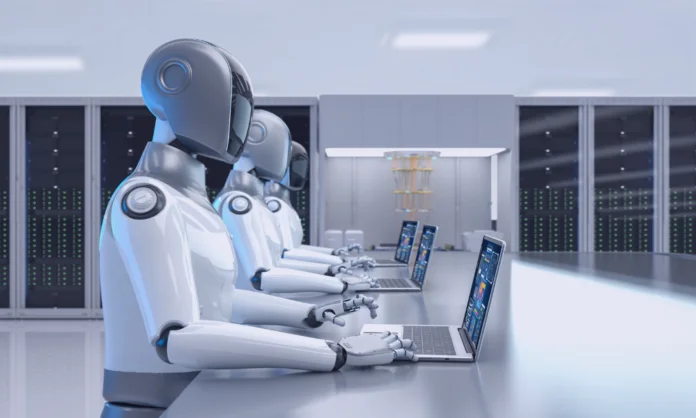Data science used to be a playground for the few- those with deep technical expertise and coding wizardry. But times are changing. By 2032, the size of the global automated machine-learning industry is expected to reach approximately USD 58.95 billion.
It is changing how organizations extract value from their data, removing barriers that once kept powerful insights locked behind complex algorithms and programming languages. Consider it your friend who excels at simplifying complex concepts into everyday language.
It handles the heavy lifting of machine learning, from preparing messy data to selecting the right algorithms to fine-tuning models for optimal performance. The result? Powerful predictive analytics is accessible to product managers, marketers, and decision-makers, not just those with “data scientist” in their job title.
What Is AutoML?
AutoML is the smart assistant that handles the tedious parts of machine learning development. Rather than manually cycling through feature engineering, algorithm selection, and model validation, its frameworks automate these processes. It is done through optimization techniques like Bayesian optimization, genetic algorithms, and neural architecture search.
Traditional ML pipelines require deep expertise in statistics, programming, and domain knowledge, creating bottlenecks in organizations eager to become data-driven. It bridges this expertise gap by encoding best practices from top data scientists into accessible tools. Technical barriers that once restricted machine learning to specialized teams have been lowered.
How Does AutoML Work?
First comes data preprocessing. The system automatically identifies missing values, outliers, and categorical variables that need encoding. It might apply techniques like imputation, standardization, or normalization, depending on what your dataset needs. AutoML platforms make quick work of it through intelligent automation rules.
The Next step is feature engineering. The system extracts, transforms, and sometimes creates entirely new variables from your raw data. This might involve principal component analysis or even creating interaction terms between variables. Its solutions leverage meta-learning. It draws on knowledge from thousands of previous datasets to make educated guesses about which feature transformations might work best for your specific problem.
The period of model selection and hyperparameter optimization is finally reached. Using methods like Bayesian optimization, grid search, and random search, it methodically investigates the solution space. For deep learning applications, some systems even use neural architecture search, creating and evaluating hundreds of neural network designs to identify the best setups.
Throughout this process, cross-validation ensures your model will generalize well to new data, not just memorize what it’s seen before.
Will AutoML Replace Data Scientists?
Despite AutoML’s impressive capabilities, it complements rather than replaces human expertise. Domain knowledge and critical thinking remain essential for framing business problems, contextualizing results, and identifying potential ethical implications in ways that automated systems simply cannot.
Real transformation is not elimination. Instead, it is elevation. Automated ML handles routine modeling tasks while data scientists focus on strategic challenges and interpretability. Computational efficiency and human intelligence work together to provide stronger solutions than either could on its own.
Use Cases and Applications
Predictive Maintenance: Utilizing manufacturing operations ML was automated to analyze sensor data trends and maintenance history to predict equipment breakdowns before they occur. These models reduce downtime and maintenance costs as well as extend machinery lifespan.
Customer Churn Prevention: Marketing departments deploy Automated ML to identify at-risk customers by processing behavioral data, purchase history, and support interactions. The resulting models enable proactive retention strategies before customers even consider jumping ship.
Financial Fraud Detection: Banks and payment processors use Automated ML to build adaptive fraud detection systems. They evolve against sophisticated schemes. These systems process transaction patterns, geolocation data, and user behavior signals to flag suspicious activities.
Healthcare Diagnostics: Automated machine learning is used by medical researchers to create diagnostic models from complicated patient data, such as genetic markers, imaging findings, and electronic medical records. These tools assist clinicians by highlighting potential conditions that might otherwise be overlooked during initial assessments.
The Future of AutoML
We’re already seeing the emergence of domain-specific AutoML platforms optimized for data types – time series forecasting in supply chains, computer vision in manufacturing quality control, and natural language processing in customer service. This specialization trend will accelerate, with platforms that understand the nuances of your industry’s data right out of the box.
The next generation of tools will likely function more as intelligent partners, combining automation with interactive feedback loops where human experts can inject domain knowledge at critical decision points. This balanced approach will produce models that are both technically sound and contextually relevant. It will help us get closer to the goal of making machine learning more widely available without compromising control or sophistication.
To learn more details about Automated Machine Learning and other similar technologies, visit YourTechDiet!
Recommended For You:
K-Nearest Neighbors (KNN) Algorithm in Machine Learning: A Complete Guide
A Guide to Multimodal Machine Learning (MMML): Integrating Sight, Sound, and Text

